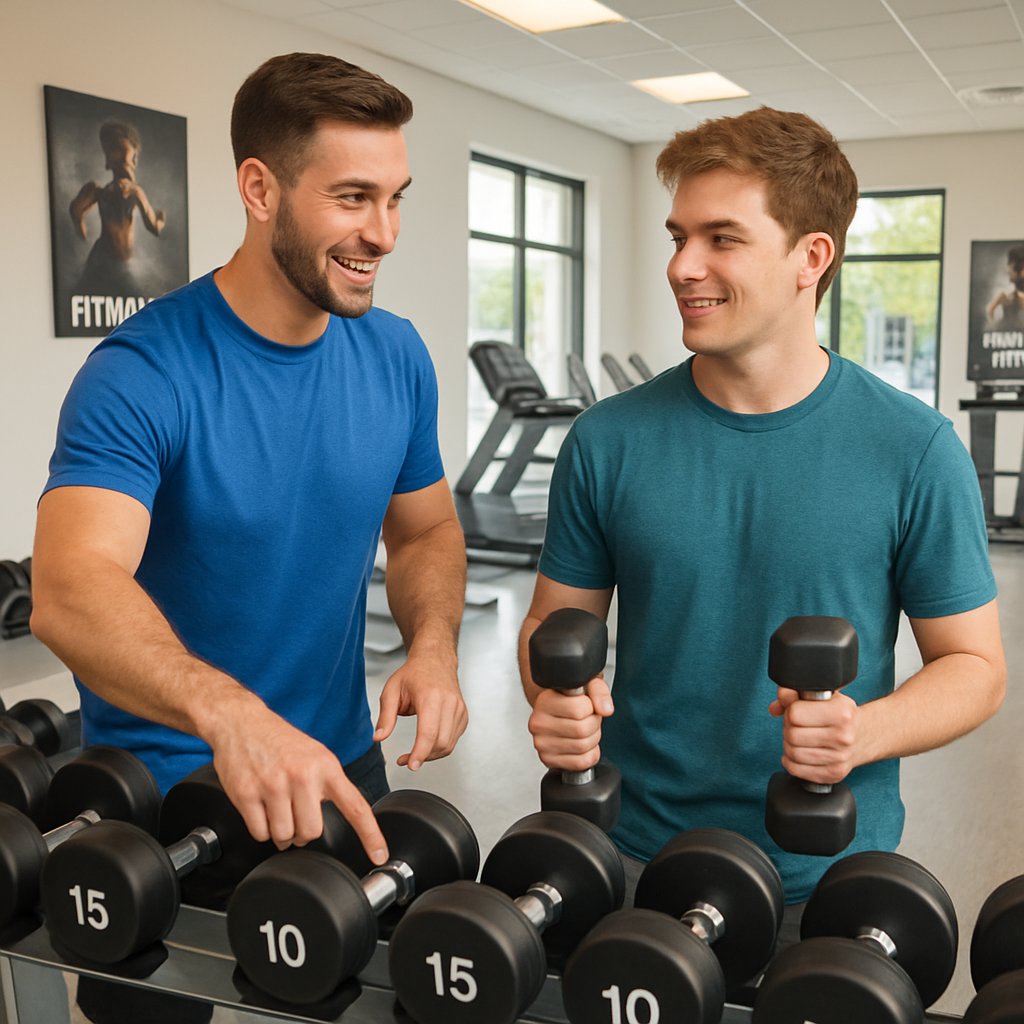The ideal size hand weights for fitness depend on your experience level, exercise type, and fitness goals—but most beginners start with 3–10 lb (1–5 kg) for women and 5–20 lb (2–10 kg) for men. Choosing the right dumbbell weight is crucial for safe, effective workouts that deliver results. In this guide, you’ll learn exactly how to select the best hand weights for your needs, how to self-test your ideal weight, and the current expert recommendations.

Selecting the correct hand weights not only speeds up your fitness progress but also helps prevent injuries and maximizes workout benefits. Whether your goal is toning, building strength, or improving endurance, understanding hand weight sizes will set you up for success.
What Size Hand Weights Should I Use For Fitness?
- Beginners: Start with lighter weights (women: 3–10 lb / 1–5 kg; men: 5–20 lb / 2–10 kg).
- Strength/Hypertrophy: Choose heavier weights (up to 25 lb / 11 kg for women, up to 50 lb / 23 kg for men).
- Test by reps: You should fatigue between 12–15 reps using correct form.
- Choose weights by exercise: Use lighter weights for isolation moves, heavier for compound lifts.
- Always increase weight gradually for safety and results.
For official guidance, check out the American Council on Exercise (ACE) recommendations.
How to Choose the Right Hand Weights: Step-by-Step
1. Assess Your Fitness Level
- Beginners:
- Women: 3–10 lb (1–5 kg)
- Men: 5–20 lb (2–10 kg)
- Intermediate/Advanced:
- Women: 10–25 lb (5–11 kg)
- Men: 15–50 lb (7–23 kg)
Start with the lower end if you’re unsure. It’s safer to build up than risk injury.
2. Match the Weight to the Exercise
- Upper Body (e.g., biceps curls, shoulder press): Lighter weights (5–15 lb) for most people.
- Lower Body (e.g., squats, lunges, deadlifts): Heavier weights (15–30 lb+), as legs are stronger.
- Compound Exercises: Use heavier weights because more muscle groups are involved.
Example:
For biceps curls, try 5–10 lb to start.
For goblet squats, start with 10–20 lb.
Source: Peloton Guide (2024 update).
3. Use the “Rep Test” to Find Your Ideal Weight
- Pick a weight and perform 12–15 reps.
- If you can’t finish 12 reps with good form, use a lighter weight.
- If you can do more than 15 reps easily, go heavier.
- Your last 2–3 reps should feel challenging but not impossible.
This ensures progressive overload—a key for results.
4. Have Multiple Sets: Light, Medium, and Heavy
- Light: For warm-ups or endurance (e.g., 3–5 lb).
- Medium: For most exercises (e.g., 8–12 lb).
- Heavy: For compound/lower body (e.g., 15–20 lb or more).
Having a range allows you to match the weight to each exercise and progress over time.
Current pricing (2025):
Standard hand weights cost $1.50–$3.00 per pound. Adjustable sets (5–50 lb) average $80–$200. Prices vary by brand and coating. (Garage Gym Reviews, 2025)
5. Safety Tips & Common Questions
- How do I know if the weight is too heavy?
Struggling before 8 reps or breaking form means the weight is too heavy. Never sacrifice form for heavier weight. - Should I use the same weight for every exercise?
No! Use heavier weights for legs and compound lifts, lighter for arms and shoulders. - How often should I increase the weight?
Once you can complete all sets/reps comfortably, increase by 2–5 lb. - Can I use hand weights for cardio?
Yes, but choose lighter weights (1–5 lb) to avoid joint strain.
For more info, see the Mayo Clinic strength training guide.
Comparison Table: What Size Hand Weights Should I Use For Fitness?
| Goal/Exercise Type | Women (Suggested Range) | Men (Suggested Range) | Typical Reps |
|---|---|---|---|
| Beginner/Light | 3–8 lb (1–4 kg) | 5–12 lb (2–5 kg) | 12–15 |
| Toning/Endurance | 5–10 lb (2–5 kg) | 10–20 lb (5–10 kg) | 10–15 |
| Strength/Hypertrophy | 10–25 lb (5–11 kg) | 20–50 lb (10–23 kg) | 6–12 |
| Legs/Compound | 15–25 lb (7–11 kg) | 20–50 lb (10–23 kg) | 8–12 |
Latest Expert Advice (2025 Update)
- Recent studies show that gradually increasing weights (progressive overload) leads to faster strength gains (ACE, 2024).
- Many gyms recommend starting with three sets: one light, one medium, and one heavy for best versatility (Garage Gym Reviews, 2025).
- Some brands now offer smart dumbbells with built-in sensors to track reps and progress (check Peloton’s latest gear).
Authoritative External Resources
- American Council on Exercise (ACE) – How to Choose the Right Weight for Strength Training
- Peloton: How to Choose Weights
- Mayo Clinic – Strength Training Basics
Conclusion: Take Action With Confidence!
The right hand weight for fitness is one that challenges you while allowing perfect form—most beginners should start with 3–10 lb (women) or 5–20 lb (men) and adjust as they grow stronger. Don’t be afraid to start light and progress gradually. Listen to your body, match the weight to the exercise, and focus on safe, steady progress.
Ready to get stronger? Try out a few hand weights using the rep test, and build your own light, medium, and heavy set for the best all-around results. For more tips, visit the official ACE fitness resource or ask your gym trainer for personalized advice!
